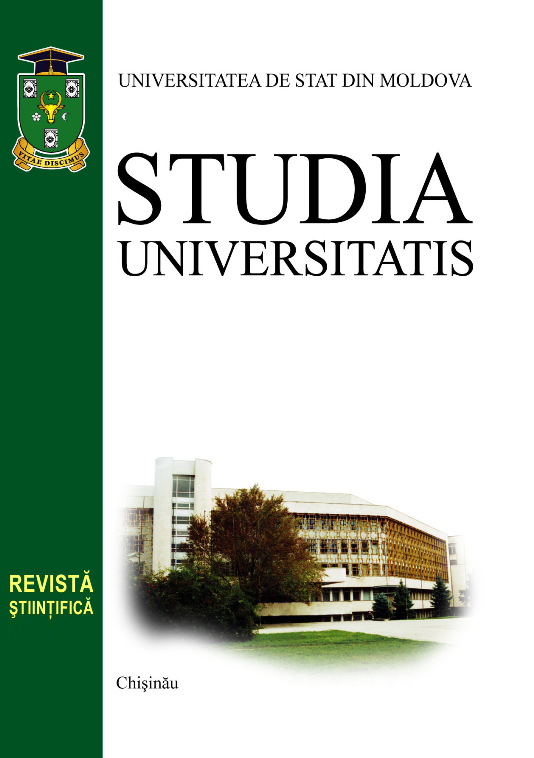DEGRADAREA/MINERALIZAREA ANTIBIOTICELOR ÎN SOLUȚII APOASE PRIN APLICAREA PROCESELOR DE OXIDARE AVANSATĂ
Maria GONȚA, Larisa MOCANU, Vera MATVEEVICI Universitatea de Stat din Moldova
Rezumat
Emergenții farmaceutici sunt, în mare parte, reziduuri medicamentoase greu biodegradabile, care au o eficiență de înlăturare de 20,0-50,0% prin aplicarea metodelor convenționale, comparativ cu eficiența înaltă obținută dupa aplicarea proceselor de oxidare avansată. Obiectivul principal al acestei cercetări rezidă în stabilirea parametrilor fizico-chimici optimi care influențează procesele de oxidare avansată a amoxicilinei (AMX) din soluție aposă. Au fost realizate mai multe studii experimentale în vederea determinării performanței de degradare și gradului de oxidare/mineralizăre în funcție de valorea pH-ului, concentrația H2O2 și a catalizatorilor (ioni Fe2+ și dioxid de titan). Concentrațiile inițiale ale reactanților au variat în intervalul: 0,01–0,3 mM pentru ioni Fe2+, 0,1–0,5 g pentru TiO2 și 1,0–5,0 mM pentru H2O2. Oxidarea catalitică omogenă și eterogenă a AMX s-a realizat la valoarea pH-ului de 2,2 pentru sistemul AMX/Fe2+/H2O2/UV și de 3,5 pentru sistemul AMX/TiO2/H2O2 /UV. Metodologia cercetării include studiul proceselor de oxidare/mineralizare prin determinarea variației consumului chimic de oxigen și a concentrației substratului prin metode spectrofotometrice. După stabilirea parametrilor fizico-chimici, s-a obținut că amoxicilina din soluție apasă s-a degradat 90,0% și s-a oxidat/mineralizat 96,0% prin aplicarea reagentului Fenton, iar pentru oxidarea fotocatalitică a AMX în prezența dioxidului de titan performanța de degradare este de 65,0%, iar gradul de oxidare/mineralizare – de 97,0%. Deși rezultă un grad de oxidare/mineralizare înalt, concentrația compușilor remanenți este ridicată (11,9-12,5 mgO/L), ceea ce indică prezența unor compuși organici stabili. Cuvinte-cheie: amoxicilină, oxidare catalitică omogenă, reagent Fenton, oxidare catalitică eterogenă, dioxid de titan, degradare, oxidare/mineralizare.


